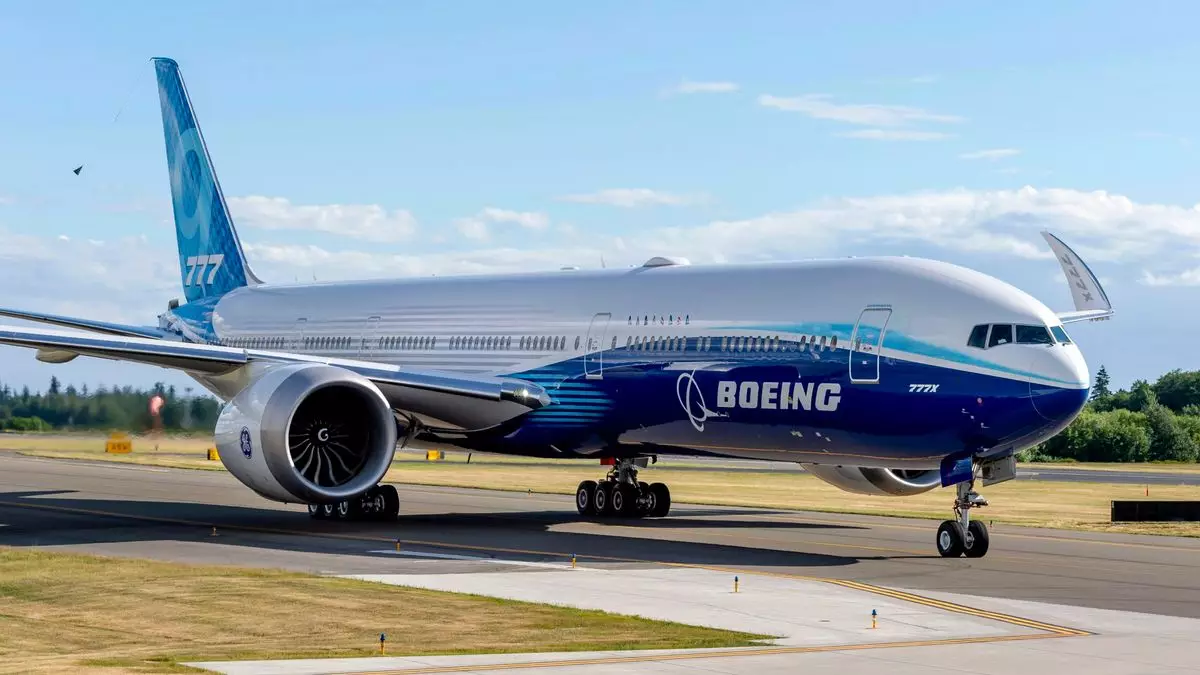The aerospace industry is a delicate ecosystem where various components rely on the intricate interactions between manufacturers, suppliers, and regulatory bodies. Recent developments involving Boeing and its suppliers highlight how labor disputes can create a chain reaction affecting the entire sector. In particular, Spirit AeroSystems recently announced the temporary furlough of 700 workers as they grapple with the repercussions of a strike by Boeing machinists. This situation not only underscores the importance of labor relations within the aerospace industry but also raises questions about compliance, oversight, and operational stability.
Boeing’s workforce, consisting of approximately 33,000 employees, initiated a strike on September 13, halting production of critical models such as the Boeing 767, 777, and 737 Max jets. This action sent shockwaves through the supply chain, particularly affecting major suppliers like Spirit AeroSystems, which provides essential components for these aircraft. The impending furlough of 700 workers at Spirit beginning October 28 is a direct consequence of the halted production, revealing a significant vulnerability when one facet of the supply chain experiences disruptions. Spirit’s spokesperson emphasized that the furloughs are part of a broader cost-cutting strategy, limiting overtime, hiring, and travel, which reflects the dire situation at hand.
The furloughs serve as a clear indicator of how labor disputes can impose immediate operational challenges on suppliers. With Spirit indicating that it has accumulated inventory that cannot be shipped to Boeing, it becomes evident that logistical and operational constraints are mounting. The critical interplay of supply and demand is under stress, illustrating how Boeing’s labor issues create ripple effects within the wider economic framework of the aerospace sector.
Compounding the issue, Boeing is also facing increased scrutiny from the Federal Aviation Administration (FAA) over its safety compliance practices. The agency recently announced a comprehensive review of Boeing’s safety processes, a move that reflects ongoing concerns about the company’s safety culture. The FAA’s oversight has come under fire, with reports highlighting weaknesses that limit the agency’s ability to monitor compliance and address safety concerns effectively.
These safety reviews, often triggered by safety violations, have a cascading effect on production timelines and supplier interactions. Regulatory compliance must be maintained to ensure that production can resume smoothly once labor disputes are resolved. The ongoing FAA investigation may add yet another layer of complexity to the situation, which could delay Boeing’s ability to address its backlog and ramp up production post-strike.
As Boeing grapples with both the strike and the FAA’s oversight, the company has announced plans to lay off approximately 17,000 workers in the coming months due to mounting revenue losses from idle assembly lines. This decision comes on the heels of Spirit’s worker furloughs and paints a grim picture for the workforce in the aerospace sector. Layoffs not only impact the immediate livelihoods of those workers but also have long-term ramifications for the industry’s talent pool and overall morale.
The specter of mass layoffs looms large in an industry already recovering from the harsh impacts of the COVID-19 pandemic. The current labor standoff and the potential fallout could lead to lasting repercussions for Boeing’s reputation and the trustworthiness of its supply chain. Furthermore, such significant workforce reductions could complicate future recruitment efforts, making it difficult for the company to rebuild its workforce to meet subsequent demand increases.
The convergence of labor disputes, regulatory scrutiny, and operational challenges calls for strategic resolution and communication from Boeing and its affiliates. As the aerospace industry faces a critical juncture, it is imperative that stakeholders—ranging from company executives to regulatory bodies—engage in constructive dialogue to mitigate the impact of such disputes. The ongoing situation serves as a stark reminder of the interconnectedness of modern supply chains and the need for a harmonious balance between labor, regulation, and operational stability. The future of aerospace manufacturing may very well depend on how effectively these challenges can be navigated.


Napsat komentář